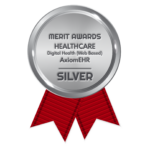As we’ve mentioned in previous blogs, your <a href=”https://axiomehr.com/customizable-behavioral-health-ehr-system/”>EHR should be flexible</a>, and always work for you, not against you. For an EHR to perform optimally, improve quality of care and reduce clinical frustrations, it needs to work with your clinic’s existing software platforms.
According to the HIMSS 2019 Top Trends Report, interoperability is still elusive in the health IT industry, despite how critical it is to patient care. In addition, the Office of the National Coordinator for Health Information Technology issued an order that prohibits information blocking and requires data sharing in appropriate formats. By making interoperability a bigger priority in the years to come, clinics will be better equipped to make better use of existing data, allowing for higher-quality care.
While interoperability can drastically improve health care operations as a whole, we’d like to take a moment to break down just how much interoperability will improve your clinic long-term. With benefits in nearly every aspect of the clinical experience, interoperability is the key to a thriving health care organization.
Better Patient Understanding
When discussing interoperability, it’s important to note that interoperability doesn’t just mean within your own clinical network—it extends to other clinics as well. By having the technology to share data easily with your patients’ other providers, clinics can produce a more detailed description of the patient’s health. This can illuminate patient conditions that might’ve otherwise gone unnoticed, prevent unnecessary surgery or reveal side effects in specific medications. And when patients feel confident in your clinic’s ability to provide quality care, they’re much more likely to return in the future.
Stronger Revenue Cycle Management (RCM)
While patient care is the biggest piece of the interoperability puzzle, we can’t forget about the revenue cycle. RCM needs to be done in a way that not only addresses value-based care payment models but also helps boost clinics’ bottom lines. With an <a href=””>RCM solution that’s interoperable with your existing EHR</a>, your claims administrators won’t need to say a silent prayer that everything is coded correctly. Instead, the RCM can pull the correct data from the EHR and file thousands of claims at once without losing accuracy. By filing claims more quickly and accurately, clinics can reduce their rate of denials and get paid faster.
While interoperable RCM solutions are key, it’s equally as important to make sure your clinic is only using one RCM. Several EHRs are combined with as many as three RCM vendors, which causes even more operational issues that lead to data silos. Having one RCM that’s interoperable with your clinic’s existing tools will dramatically reduce preventable errors and workflow redundancies, helping your clinic boost its bottom line.
Faster Responses to Changing Health Care Needs
Clinics that have interoperable software solutions are much more adept at responding to changing needs in the health care landscape. This has been made especially apparent by COVID-19. As patients were being forced to go to unfamiliar facilities due to the pandemic, clinics that have stronger data exchange are better able to treat those patients than those that rely on outdated legacy systems. Additionally, interoperable systems make it much more seamless to change technology as necessary. As facilities become increasingly crowded and the need for flexibility increases, clinics with interoperable systems can switch to portable technology with ease.
Is your clinic ready to explore how interoperability can improve your unique practice? <a href=”https://axiomehr.com/contact/”>Contact us today</a> to learn how our <a href=”https://axiomehr.com/customizable-behavioral-health-ehr-system/”>customized EHR software solutions</a> can improve care outcomes, <a href=”https://axiomehr.com/healthcare-revenue-cycle-management-software/”>speed up your revenue cycle</a> and make you more adaptable to operational changes.





